Killer on the Loose: Serial Killers
"We are vain and we are blind I hate people when they're not polite" -cue “Psycho Killer” by the Talking Heads as the end credits roll…
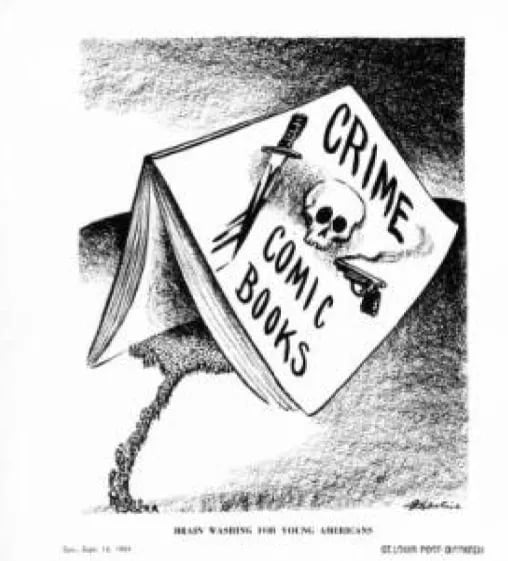
On October 3rd, Netflix dropped Monster: The Ed Gein Story so maybe it’s time we covered some serial killer books.
One of the great non-fiction crime comics is Did You Hear What Eddie Gein Done? By Eric Powell and Harold Schechter.
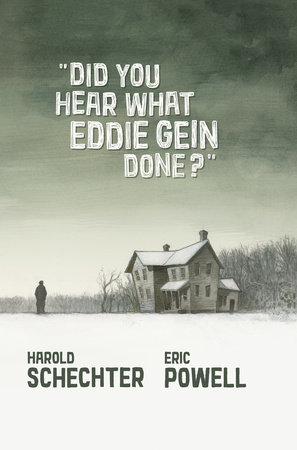
It’s a thoroughly researched book that doesn’t indulge in romanticizing Gein while acknowledging his influence on the pop culture landscape and popular imagination. If you haven’t read it, you should.
The books covered today aren’t really in the Gein vein and are mostly more fanciful and over the top. But that’s also one of the directions the serial killer genre has opened up to.
The books covered operate in different modes and there are some more serial killer comics I’d like to cover so maybe I’ll do another post on the topic.
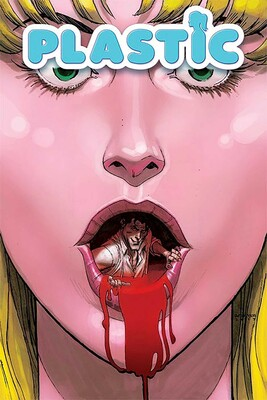
Title: Plastic
Writer(s): Doug Wagner
Artist(s): Daniel Hillyard
Plot Summary: Retired serial killer Edwyn Stoffgruppen is in love with Virginia, a girl he "met online." Her affection quiets his vile urges. Together, they tour the back roads of America in their LTD Crown Vic, eating doughnuts and enjoying their insatiable appetites for each other. Life is good…until a Louisiana billionaire kidnaps Virginia, forcing Edwyn to kill again in exchange for her freedom. And the twist to all of this? Virginia is a sex doll.
Review: It should be noted up front that some of the information in the synopsis comes to the reader via reveals as the story progresses, so it’s a little spoilery. But I also understand it’s a tough one to summarize in an enticing way without spoiling it.
The reason why its sub-genre is horror is because the violence is often portrayed graphically and on the page, which is a more horror mode than crime mode, but the nuts and bolts of the story are crime fiction. Everything about Plastic is over the top, and it should be. That’s why it works so well. An over the top premise can lose its edge if it’s not told in a way that matches its energy. The narrative climbs to unexpected heights and it becomes a more touching and human story than you might initially expect. It may not be for everyone but I hope readers will give it a try.
I’m going to paraphrase something I once said about the 1971 sleazy action/crime Japanese film, No Grave For Us: you’re either the kind of person who wants to read a story about a serial killer who goes after a gangster who kidnaps his blow up doll girlfriend, or you aren’t. I know which camp I fall into. Plastic is violent, over the top, funny, and entertaining as hell.
Another Plastic story was released earlier this year, Plastic: Death & Dolls. The synopsis makes it sound like a prequel. I’ll report back once I’ve read it.
Two paired recommendations: There is a Charlie Huston short story. “Like a Lady”, with a detective chasing a couple robbing liquor stores and it turns out that the female robber is really a sex doll. Also, the Indian movie Soodhu Kavvum, which exists firmly in Elmore Leonard Territory but has a reveal that should appeal to readers of Plastic.
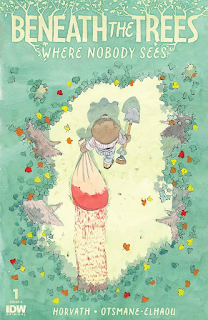
Title: Beneath the Trees Where Nobody Sees
Writer(s): Patrick Horvath
Artist(s): Hassan Otsmane-Elhaou
Plot Summary: Don’t. Murder. The locals.
This is small-town serial killer, upstanding citizen, and adorable brown bear Samantha Strong’s cardinal rule. After all, there’s a sea of perfectly ripe potential victims in the big city just beyond the forest, and when you’ve worked as hard as Sam to build a cozy life and a thriving business in a community surrounded by friendly fellow animal folk, warm decor, and the aroma of cedar trees and freshly baked apple pie…the last thing you want is to disturb the peace.
So you can imagine her indignation when one of Woodbrook’s own meets a grisly, mysterious demise—and you wouldn’t blame her for doing anything it takes to hunt down her rival before the town self-destructs and Sheriff Patterson starts (literally) barking up the wrong tree.
Review: Beneath the Trees where Nobody Sees is pitched as "Dexter meets Richard Scarry's Busy, Busy Town" and yep, that about sums it up.
The first issue is great at setting everything up. The characters are all lovable, cute animals. Our main character, a bear, is a beloved member of a small town. Walking down main street, she has kind words for everyone she passes and receives many kind words in return. People are friendly, kind, and help each other out. The epitome and idealized version of small town living.
Within a couple of pages, our sweet main character goes to the big city, lures someone into helping her, drugs them, and takes them into the country to murder and dismember them. She then heads back to town to resume her comfortable life, all urges satiated for now. Her life is neat and orderly. She has a system. She has a plan and works her plan. No muss no fuss. Until the day of the big town parade when a murdered and dismembered body is nailed to one of the floats and uncovered in front of the entire town.
While everyone is freaking out, our main character is having a different type of crisis. Someone’s fucking with her on her turf and this little public display is going to bring unwanted attention to her activities. So she has to find the other killer first.
The art is a real highlight here. It looks like it could be art from a children’s book. It’s lush and warm and inviting. It’s like a lush children’s book. These visuals in service of a visceral, and violent story create a tension that elevates the entire project.
Beneath the Trees is a full dark story told in an unexpected way and is worth checking out.
There is another Beneath the Trees story this year: Beneath the Trees Where Nobody Sees: Rite of Spring. The first three issues are available through Hoopla but I haven’t had a chance to read them yet.
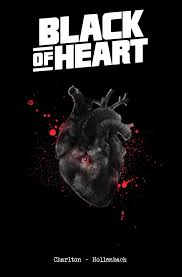
Title: Black of Heart
Writer(s): Chris Charlton
Artist(s): David Hollenbach
Plot Summary: 1949. A depraved serial killer stalks the streets in his yellow taxi, dumping the ravaged bodies of random women in the back alleys of New York City. Homicide Detective Drake Harper is condemned to pick up the pieces, but as the body count rises, Drake's personal life spirals out of control and no amount of booze can silence the voices of his past.
Review: The setup is fairly simple. Take a post-Hannibal Lecter/Se7en serial killer (violent, elaborate kills) and drop him into a classic period noir/crime film story. If that sounds like your jam, then this is the book for you. Think hat squad Se7en.
Some of the plot beats of the story play out in a fairly straightforward manner. So, for example, when the protagonist detective’s estranged wife who he is still pining for gets picked up by the killer, it’s a plot beat you can see coming.
However, what really sets Black of Heart apart is the art. It’s a textured, layered, almost multimedia art style that feels both distorted and alive. There’s also maybe some collage or distortion effects that are used and some of the characters look like they were made by taking cutouts of famous actors and roughing them up so you’re not sure if that’s a recognizable face or not.
Great set-up. Straight forward story. Interesting art style.
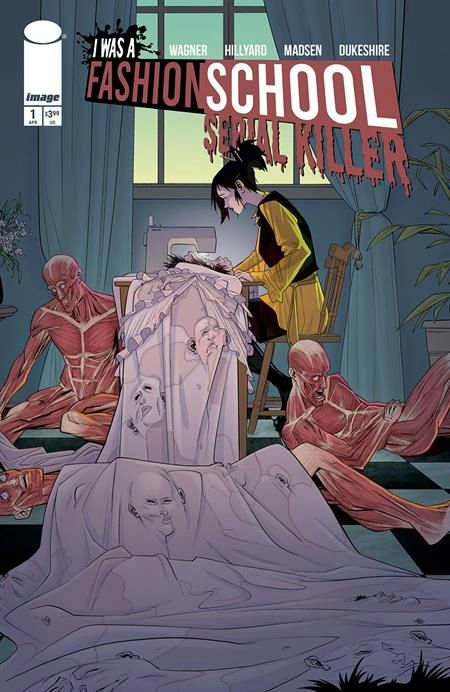
Writer(s): Doug Wagner
Artist(s): Daniel Hillyard
Plot Summary: Rennie Bethary has just been accepted into New York City’s most prestigious fashion school. Her designs are daring, edgy, and singular…and made of human flesh. Did we forget to mention Rennie is a serial killer who simply wants to be a fashion designer instead? Stupid, pesky, murderous urges!
Review: I was a Fashion School Serial Killer is a five issue horror/crime mini-series that wrapped up in August. The collected trade paperback is due out in December.
Rennie is an outcast at an expensive New York fashion school. She finds a small group of friends that she comes to care about and battles snobby rivals that don’t want her or her working class friends there. It’s got a real 80’s vibe to the whole school set-up.
Admittedly, I have manga on the brain because I’ve been reading a lot of it recently, but there is a manga vibe to this story. From the school setting to the cozy slice of life vibes that are more interested in the in-between moments of a serial killer’s life. There’s also a wholesome quality to the story. This killer isn’t evil, she’s accepted and liked.
Which isn’t to say that there aren’t gory moments because there are. The book definitely takes the time to revel in its kills. Especially because the narrative and the protagonist deem the kills to be worthy and the victims to be bad.
My only gripe is the ending sets up future stories that make the entire book feel like a prequel or origin story and I tend to be a little allergic to origin stories in general. But to the extent that I’m complaining (not really) it’s only because I’d like to see the further adventures of these characters. To circle back to manga comparison, it’s easy to imagine this as the first volume of a long running shōjo series about a fashion serial killer and her buddies as they transition from school to running a business. All I’m saying is that we should be on volume 14 by now :)
I had a lot of fun reading this story and was totally entertained.
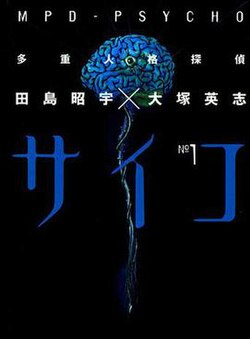
Plot Summary: Police detective Yosuke Kobayashi's life is changed forever after a serial killer notices something "special" about him. That same killer mutilates Kobayashi's wife and kick-starts a "multiple personality battle" within Kobayashi that pushes him into a complex tempest of interconnected deviants and evil forces.
Review: Finally, speaking of manga, we get to MPD Psycho by Eiji Ōtsuka and Shou Tajima. It looks like MPD Psycho is only available digitally at this point (I don’t think it sold very well when it was released and I believe the print copies are oop in English).
Kobayashi is a police detective working on a particularly vicious serial killer case that involves dismembered bodies. The killer makes Kobayashi’s wife his next “victim”. Why in quotes? Because she’s kept alive after her arms and legs have been severed and shipped to Kobayashi at the police headquarters in a cold storage freezer. After finally dying he hunts down the killer and kills him. This act triggers a state of disassociation and he develops multiple personality disorder. Hence the play on words title. He goes to jail for killing his wife’s murderer and upon release he begins working for a private research firm that works with the police using his insight as a multiple and his skills as a detective to track down other killers. While the detective is one of the dominant personalities, the other dominant personality is a psycho killer.
That brief synopsis is just the first third or so of the first volume (of which there are 11) and is the launching point for the series. Obviously this isn’t a story for the faint of heart and easily offended. This is a dark and violent tale of epic proportions. By the end of the first volume a much larger scope of story is revealed, a revelation that will take the story, over the course of the remaining volumes, into territory that no reader will expect.
So, we have a killer who is also a police detective, which may remind some of another famous character, Dexter. It’s probably important, as I’ve stated before, to note that Dexter didn’t come about fully formed. It was a character that refined some pre-existing characters, stories and ideas that had been building for a couple of years and softened their sharp and jagged edges and made them more palatable. This may seem odd to those who are fans of the Dexter books, and particularly the show, that Dexter is somehow lighter fare. But nonetheless when placed in his proper context, which includes, in part, elements of The Silence of the Lambs (serial killer directly hunting or aiding in the hunt of another serial killer); the issue of Sandman titled “Collectors” (the almost secondary world interaction of serial killers); Blackburn (serial killer with morals and a code among others) and stories where the Detective has to investigate a crime that they committed, it’s easy to see that something was brewing and the transformation into a more broadly commercial character.
The writing in MPD Psycho is restrained in contrast to some of the shock value moments, raising questions, doling out information, laying the foundation for future story, obfuscating and hiding things in plain sight. MPD is a complex story written for those readers wishing for a higher level of engagement. There is a large cast of characters and an increasingly complex and layered plot. Otsuka trusts his readers to be able to juggle all of the pertinent information.
But while he may trust in the reader he also plays with that trust by inverting many of the standards of the detective story. In addition to themes of identity, character and memory the creation of a police detective who is also a serial and or psycho killer cuts right to the very core of basic assumptions and truths about the character types and the stories of them that we have read over the years.
The art is defined by its use of simple, clean and sparse lines that never draws attention to itself and brings the fullest impact to the story.
Part crime story, part horror, part science fiction MPD – Psycho is a tour de force of dark imagination and story.
You just read issue #14 of Bad Karma, Loose Ends & Stray Bullets: Exploring the World of Crime Comics. You can also browse the full archives of this newsletter.